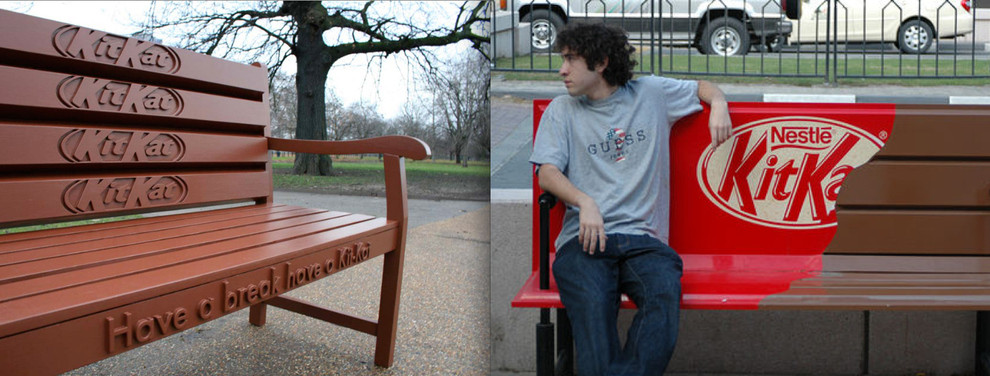
Perceptual Set: A Look Into Creative Advertising.
Advertising has been around for ages. It’s a channel of persuasion from the producer to the consumer. However certain companies have found that by utilizing optical illusions; (therefore altering a perceptual set) it can be a fun and effective way to advertise ones product. One particular example was done by Nestle, a well known candy company. By transforming an ordinary bench into a delicious treat, Nestles KitKat was sure to be on people’s minds. This chocolaty bench alters an individual’s perception which is what makes this particular ad successful.
A perceptual set is defined as acknowledging and interpreting specific senses around you, according to McLeod (2007). McLeod found, through the studies of Vernon, (1955) that a perception functions in two parts. First Vernon described the expectation of what to perceive and what stimulus to focus on as the “Selector”. Second he explained that how one chooses to organize and categorize that particular stimuli, is referred to as the “Interpreter”.
Are there any advertisements you can think of which made you question your perception?
First a human sees the bench and perceives it as a figure to sit on. However the “Selector” also takes note of the design of the bench. It then access’s the memory bank and remembers how good Nestles KitKat tastes. The perception is now confused because it’s original concept of what to perceive is now distorted as it envelopes in this new stimuli. The “Interpreter” focuses on both stimuli. The old, (which is to sit on a bench) and the new (which is to crave a KitKat bar). McLeod found that perceptions influence a number of features regarding a human. Some of these were: expectations, motivation and emotion. Individuals absorb both the seat and the design of the candy bar as their expectation, motivation and emotions change over this new found perception.
People typically sit on a bench when they are tired; however the expectation is that Nestles KitKat is giving you the break you need. Furthermore, it changes the motivation of being tired to craving chocolate. The emotion derived from sitting on a bench is usually minimal, however by making the bench a feel-good treat; it manipulates people into feeling happy, as though they were about to enjoy something delicious. KitKats infamous slogan “Give me a break” is now turned literal; when exhausted bystanders sit on this giant optical illusion.